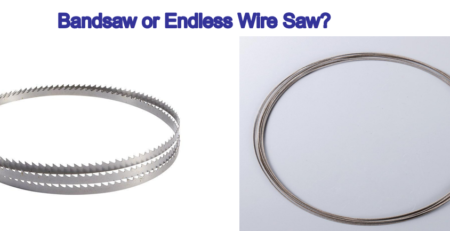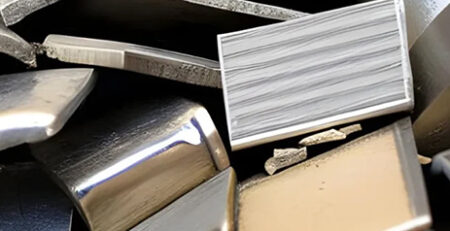An article on understanding the characteristics and application fields of silicon carbide ceramics
1、 Silicon carbide ceramics and their performance characteristics
In the 21st century, with the development of science and technology, information, energy, materials and bioengineering have become the four pillars of the development of social productivity. Silicon carbide is characterized by stable chemical properties, high thermal conductivity, low coefficient of thermal expansion, low density, good wear resistance, high hardness, high mechanical strength and chemical corrosion resistance, it has developed rapidly in the field of materials and is widely used in fields such as ceramic ball bearings, valves, semiconductor materials, gyroscopes, measuring instruments, aerospace, etc.
Silicon carbide ceramics began to develop in the 1960s, before which silicon carbide was mainly used for mechanical grinding materials and refractory materials. Countries around the world attach great importance to the industrialization of advanced ceramics, and now they are no longer satisfied with preparing traditional silicon carbide ceramics. Enterprises producing high-tech ceramics are developing faster, especially in developed countries. In recent years, multiphase ceramics based on silicon carbide ceramics have emerged one after another, improving the toughness and strength of individual materials. The four main application areas of silicon carbide are functional ceramics, advanced refractory materials, abrasives, and metallurgical raw materials.
2、 Application examples of silicon carbide ceramics

1. Silicon carbide abrasive tools
Silicon carbide has a high hardness and can be prepared into various grinding wheels, sandpaper, and abrasives, mainly used in the mechanical processing industry. The Mohs hardness of silicon carbide is 9.2-9.6, second only to diamond and boron carbide, and is a commonly used abrasive. The chemical composition of silicon carbide abrasives includes silicon carbide, free carbon, and Fe2O3. The specific chemical composition of abrasives is shown in Table 2. The higher the content of silicon carbide, the better its hardness and grinding performance. Industrial silicon carbide in China is mainly used as abrasive. Abrasives are widely used in industry, especially when machining high-precision or hard parts, and abrasive tools are essential.

Grinding wheels are also essential tools for grinding cutting tools and cutting hard materials. Silicon carbide grinding wheel is a circular solid grinding tool with a central through hole made of abrasive and bonding resin, and it is the most commonly used in molds. The main components of silicon carbide are black silicon carbide and green silicon carbide. Black silicon carbide has a lower hardness compared to green silicon carbide, and is used for grinding materials with lower hardness, such as cast iron and non-metallic materials; Aluminum silicon carbide is suitable for grinding hard alloy, optical glass, carbon alloy and the like. There is also a type of cubic silicon carbide specifically designed for ultra precision grinding of micro bearings. Among other abrasives with the same particle size, cubic silicon carbide has the highest processing efficiency.
In the automobile manufacturing industry, the matching between piston ring and cylinder, between valve and valve seat, and the accuracy of transmission and gear require abrasive and mold processing.
2. Silicon carbide composite material
Silicon carbide based composites (SiC-CMC) have been widely used in high-temperature thermal structures in the aerospace field due to their high toughness, high strength, and excellent oxidation resistance. The preparation process of SiC-CMC includes fiber preforming, high-temperature treatment, mesophase coating, matrix densification, and post treatment. High strength carbon fiber has high strength and good toughness, and the prefabricated body made of it has good mechanical properties.
The mesophase coating (i.e. interface technology) is a key technology in the preparation process. The methods for preparing the mesophase coating include chemical vapor infiltration (CVI), chemical vapor deposition (CVD), gel sol (Sol gcl), and polymer impregnation pyrolysis (PLP). The CVI method and PIP method are most suitable for preparing silicon carbide matrix composites.
The materials used for interface coatings include pyrolytic carbon, boron nitride, and boron carbide, among which boron carbide is receiving increasing attention as an antioxidant interface coating. SiC-CMC, which is usually used for a long time under oxidation conditions, also needs to undergo oxidation resistance treatment by depositing a layer of approximately 100 thick on the surface of the product through CVD process μ M’s dense silicon carbide enhances its high-temperature oxidation resistance.
3. Silicon carbide ceramic ball
Silicon carbide ceramic balls have excellent mechanical properties, excellent oxidation resistance, high wear resistance, and low friction coefficient. Silicon carbide ceramic balls have high high-temperature strength, and the strength of ordinary ceramic materials will significantly decrease at 1200~1400 degrees Celsius. However, the bending strength of silicon carbide remains at a high level of 500~600MPa at 1400 degrees Celsius, so its working temperature can reach 1600~1700 degrees Celsius.

Scope of application of silicon carbide ceramic balls: They have been widely used in industries such as petroleum, chemical engineering, microelectronics, automobiles, aerospace, aviation, papermaking, lasers, mining, and atomic energy. Silicon carbide has been widely used in high-temperature bearings, plates, nozzles, high-temperature corrosion-resistant components, as well as electronic equipment components in the high-temperature and high-frequency range.
4. Other applications
Silicon carbide ceramic is an ideal material for manufacturing sealing rings. When paired with graphite material, its friction coefficient is smaller than that of alumina ceramic and hard alloy, and it has good self-lubricating performance. Therefore, it can be used for high PV values, improving the service life and working reliability of sealing components, especially in the transportation of strong acids and alkalis.

Silicon carbide ceramics are widely used in bulletproof armor, such as in the protection of vehicles and ships, as well as in the protection of civilian safes and cash carriers. The ballistic performance of silicon carbide ceramics is better than that of aluminum oxide ceramics, which is about 70% -80% of that of boron carbide ceramics. However, due to its low price, it is particularly suitable for occasions with large amounts and protective armor that cannot be too thick or heavy.
There are various ceramic materials used for nozzles, commonly used being alumina, silicon carbide, and boron carbide ceramics. The price of alumina ceramic nozzles is low, but due to their low hardness and poor wear resistance, they are mostly used in situations where sandblasting workload is not high. The service life of silicon carbide ceramics is 3-5 times that of alumina ceramics, which is equivalent to hard alloys. It is often used as a substitute for hard alloys, especially in the working conditions of handheld spray guns.

With the development of industrialization, especially the implementation of the ISO14000 international standard, higher requirements have been put forward for the transportation of liquids that are not conducive to environmental protection. Magnetic pumps use static seals instead of dynamic seals such as mechanical seals and packing seals, resulting in smaller leakage, higher reliability, and longer service life.
The requirement for maintenance free time for magnetic pumps is eight years, which means that they must operate continuously for eight years without disassembly. Therefore, extremely strict requirements are put forward for the selection of materials for magnetic pump components. The pump shaft, thrust plate, shaft sleeve, etc. in the pump must be resistant to wear and corrosion. At present, only silicon carbide ceramics are the most suitable materials that can meet the above conditions.




